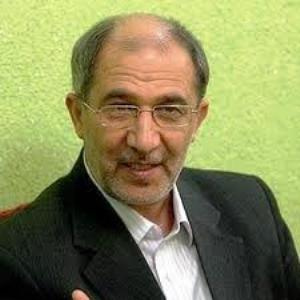NATO’s Navies, Reassurance For Arab Sheikhs

IRD: It has been for many years now that in the region, particularly in the Persian Gulf, a foreign country has had a constant presence. Generally the West, and particularly the United States as a great ally of the Arab countries, has helped the authoritarians of the countries of the Persian Gulf in safely escaping internal and regional problems. Although in many cases, the assistance had obvious contradictions with the public demands in the region. One of the latest cases of conflict is NATO’s naval presence in the Persian Gulf in the midst of popular revolutions in Bahrain, Yemen, Saudi Arabia and other Arab Middle Eastern countries. Indeed, in this atmosphere, why have Nato navies been deployed to the Persian Gulf? While the West has always tried to present itself as the supporter of the people seeking democracy and freedom in the Middle East, is NATO’s naval presence in the region in fact considered aid to the autocratic governments?
IRD: Was the Saudi military force entering Bahrain in coordination and alignment with US goals?
HA: The entrance of Saudi troops into Bahrain could not be have happened without the consent of America. If the US was against such an action, this would be formally announced and Saudi Arabia could not send its military forces to suppress the people of a country like Bahrain. Saudi Arabia is a country that performs all of its military activities in coordination with America and lets the US use its largest military bases in the Persian Gulf. From 31 years ago until now, the U.S.’s AWACS aircraft, active in identifying and obtaining information from the Persian Gulf region, were based in Saudi Arabia. So, it can be said that Saudi military actions are performed in coordination with the US.
IRD: Did the military presence of Saudi Arabia in Bahrain cause an imbalance in US power?
HA: The Saudis’ military presence in Bahrain is not considered as a change in the balance of power and security situation from the perspective of the US. While NATO forces also operate in concert with the US, the Saudi and NATO military forces are coordinated with America.
IRD: NATO navies entered the Persian Gulf. How can this presence be interpreted?
HA: In the case of NATO’s military presence in the UAE, it should be noted that three years ago, NATO had talks with the UAE in which it was agreed that NATO could be activated in the Persian Gulf through the Emirates. After the collapse of the Warsaw Pact, NATO was faced with an identity crisis, and given that it couldn’t undertake any missions against the Warsaw Pact after the disposal of the former Soviet Union, it tried to carry out new missions for the US in order to survive.
NATO was formed in reaction to the Warsaw Pact, and logic would dictate that it would collapse after the dissolution of the Soviet Union and the Warsaw Pact. But the US did not let NATO become defunct and new missions were assigned for it, including an increase in presence in the Persian Gulf and intervention in international conflicts and disputes, the first of which was involvement in the Balkan conflict and the collapse of the former Yugoslavia in Serbia.
When the US occupied Afghanistan but needed more military forces to continue their occupation of Iraq and a military presence in the country, it replaced part of U.S. forces in Afghanistan with NATO forces, and tried to send the American troops in Afghanistan to missions in Iraq. Therefore, NATO was assigned a widespread military mission in Afghanistan.
IRD: Can the presence be related to popular uprisings in the Persian Gulf?
HA: In the current situation where the Arab world is experiencing popular uprisings and the people are attempting to release themselves from the tyranny of the ruling dictatorships, the US intervenes in the future of these countries and we saw that the US first took action in Libya and then NATO sent its troops to this country. The US seeks to decide Libya’s future in cooperation with NATO, and to empower a government that is not anti-West.
On the Persian Gulf issue, it also seems that with the current situation, while some governments in the Persian Gulf region states, like Bahrain, Yemen, Oman and Saudi Arabia, are caught in popular uprisings, bringing NATO navies to the region is meant to reassure the rulers, kings and emirs to not feel overwhelmed with the popular uprisings against them, and to feel that Western countries are still supporting them and that they can safely continue suppressing the people.
Of course, an optimistic interpretation about the presence of NATO warships in the Persian Gulf can be made, which is the executing of the contract that the United Arab Emirates concluded with NATO three years ago, based on which some part of military training and some of the UAE Armed Forces military exercises have been granted to NATO.
So, such a presence can be interpreted without any references to regional issues and in alignment with it; in the current situation, any kind of political presence is a political benefit to countries such as the UAE, and to NATO and the US, rather than a military reality.

